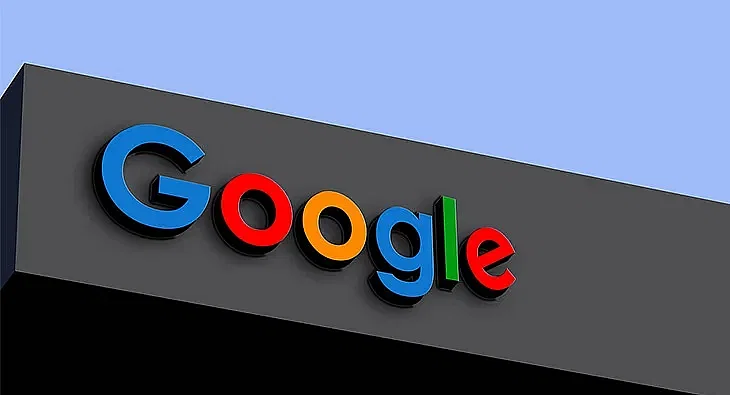Billions at stake as Google's video ad business comes under scanner

Google may have misled many advertisers about the viewership of video-ads running on third party websites and apps, according to a report put out by a digital ad research organization, Adalytics.
The Adalytics report claims that approximately 80% of the ads served through the “TrueView” system of YouTube, a Google owned company, have breached its own terms of service by hiding skip buttons or displaying “muted” adverts on websites and apps in automatic loop etc.
The report has named over 130 brands that may have purchased muted, auto-playing, mis-declared TrueView skippable in-stream inventory. This includes Honda, Hyundai, Ford, HP, Bayer, Johnson & Johnson, Samsung, JPMorghan, Pizza Hut, Disney+, Mercedes, General Motors, IBM, Microsoft, McDonalds, Siemens, Lacoste and McCain Foods.
It also lists WPP, IPG, dentsu, Publicis, Omnicorn, Havas, MIQ and Horizon Media among ad and media buying companies that appeared to have transacted muted, auto-playing, out-stream TrueView ads.
The report has shocked the advertising industry across the world with advertisers demanding refunds from YouTube for not adhering to its promises and policies.
The report has come at a time when the tech giant is facing several ongoing antitrust lawsuits globally, including India, for its alleged anti-competitive and non-transparent ad business.
Google controls nearly 70 percent of the ad market globally. Its ad revenue was to the tune of $225 billion in 2022. Of this, YouTube’s ad revenue accounts for nearly $30 billion.
Indian advertisers expressed concern over the study but refused to comment saying that they were reviewing the Adalytics report as of now.
“We can comment only after detailed deliberations within the company and our industry forum. We will review YouTube allocations if more details emerge in this case,” several leading advertisers told e4m.
Head of a digital agency said, “Google and YouTube must investigate the issue. A third party audit would be better as it can help them rebuild the trust of advertisers. Meanwhile, they should refund the ad money to affected advertisers.”
Adalytics used web-crawler data and worked with media buyers to come out with an in-depth investigative report.
Adalytics reviewed ad campaigns of over 1,000 brands, and reportedly found many of the “TrueView” ads (Google’s video ad) running in the background at “corner of the screen” in an automatic loop without any audio. Websites running “muted TrueView ads” include the NYTimes, Reuters and Wired, the report noted.
What is trueView?
TrueView is the core product for YouTube’s ad business.
“Most advertisers spend almost half of their video ad spend on TrueView which offers them a “choice-based ad format”. In this, users can skip the ad after five seconds and the advertisers are charged only if a user watches 30 seconds or the full-length of the video ad,” explains an Indian ad executive.
“However, if the skip button is hidden or obscured to make it difficult for users to skip after five seconds, it defies the very purpose of buying TrueView ads. It is counted as ad-waste,” he explains.
A digital agency head told e4m, “TrueView ads are supposed to play “in-stream” that is within YouTube or through high-quality publisher websites and mobile apps. However, TrueView ads are often displayed “out-stream” that is at the background or corner of websites without audio.
“While silent display of ads serves no purpose as users don’t interact with them, unskippable ads can affect a brand's image. In either case, it's a waste of ad money and breach of service terms. Google must be taken to task for violating business terms,” an Indian media planner said.
Indian Advertisers are increasing their digital ad spend. Google earned over Rs 25,000 Cr of digital ad revenue in India in FY22, about 80 percent jump compared to FY21.
Sajal Gupta, Digital Marketing specialist and CEO of Kiaos Marketing said, “This brings in the importance of the use of brand safety and viewability service providers such as Double Verify and IAS to pick up the flags a lot earlier. After all one has the option of switching off ads on Google Video Partner sites where this issue arises.”
Google disputed the claims
Google’s director of global video solutions, Marvin Renaud, however rejects the report’s findings in a blog post.
“The report wrongly implies that most campaign spend runs on GVP rather than YouTube. That’s just not right. The overwhelming majority of video ad campaigns serve on YouTube. Video,” he claims.
Insisting that advertisers have full control over ads display, Renaud explains, “When advertisers create video ad campaigns, they can clearly see that their ads may run on third-party sites via GVP during the campaign setup. We offer the option to opt out at any time. They can also decide where their content may appear. Advertisers can exclude specific websites and URLs along with entire topics or apps they wish to avoid when running ads.”
He further adds, “Ad inventory across the Google Video Partner network is more than 90% viewable. This is well above industry norms. The claims in the third-party report simply aren’t right. Put simply, over 90% of ads on GVP are visible to people across the web — and advertisers are only paying for ads when they are viewed.”
“We use real-time ad quality signals to determine if people are present and paying attention that help us decide whether to serve a video ad in a Google Video Partner site or app,” he said, adding that Google monitors adherence to its policies, and last year stopped serving ads on over 143,000 websites found to be in violation.
News Credit -https://www.exchange4media.com/
